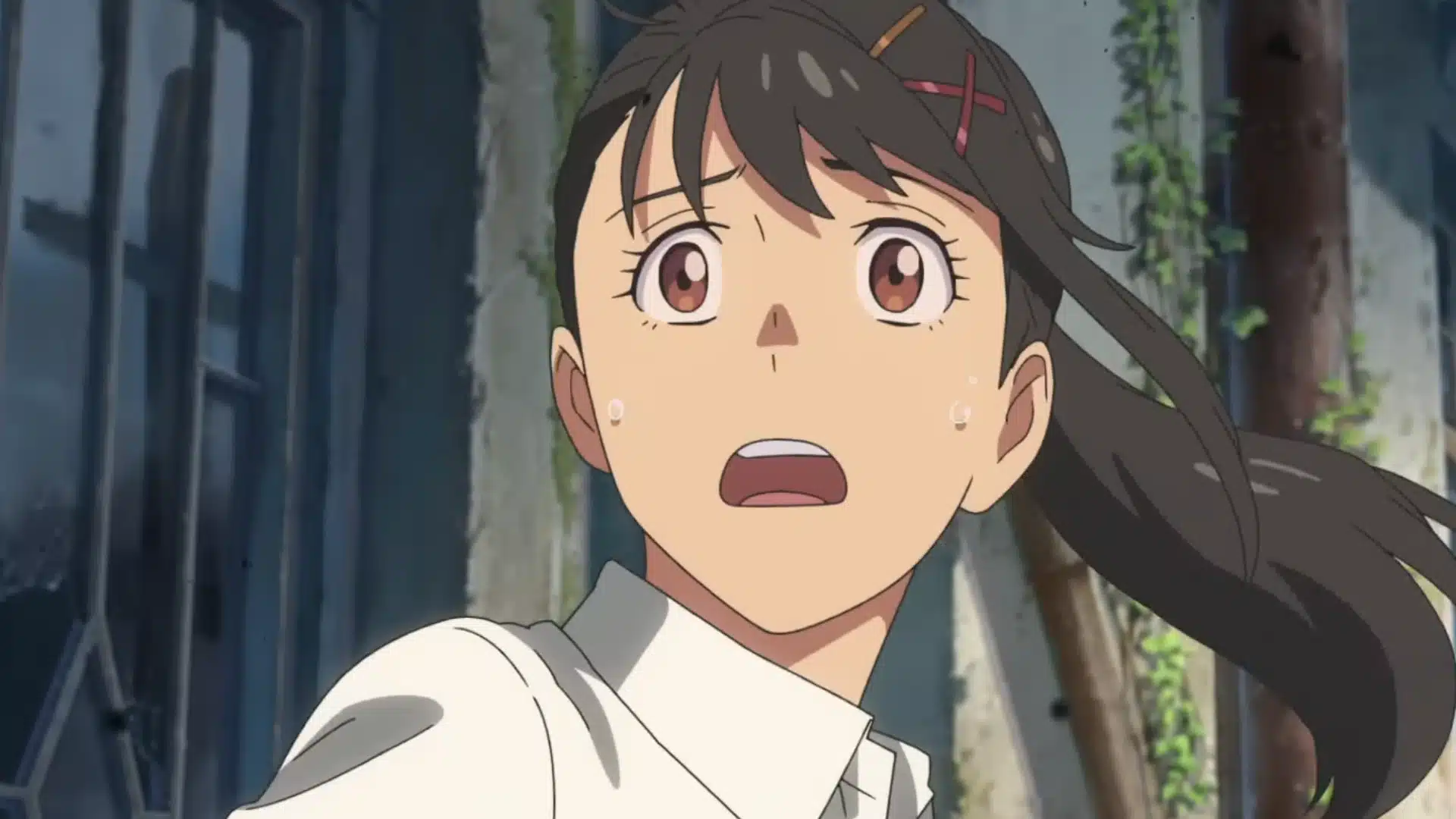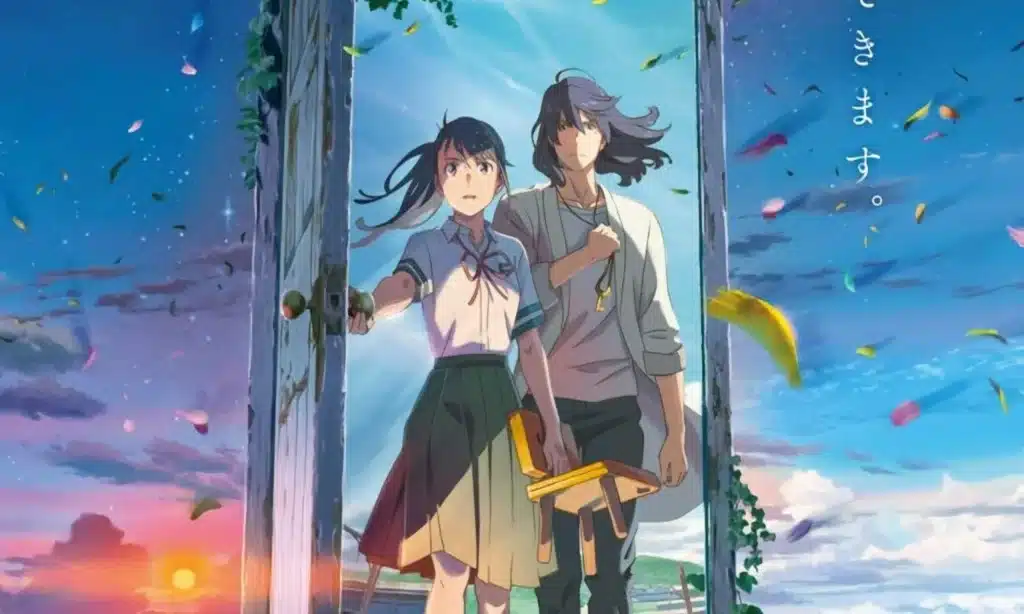Makoto Shinkai is one of the “other guys” of Japanese animation – he’s not Hayao Miyazaki, in other words – and if it does nothing else, his movie Suzume demonstrates the vast amount of influence the director of Howl’s Moving Castle, Kiki’s Delivery Service, My Neighbour Totoro and Spirited Away still wields in that country, even though he officially retired ten years ago (only to resurface unexpectedly this year with The Boy and the Heron).
Featuring a detail-rich story with a strong fantastical element and a resourceful young female protagonist who has somehow become separated from her parents, Suzume has many of the trappings of a Miyazaki movie. There’s even the outsize interest in old tech – early on a grounded freighter and a bicycle are both given the near-fetish treatment.
Suzume is an orphan child raised by her aunt who is on her way to school one day when she meets Souta, a hot dude with a Byronic aspect. What she doesn’t yet know is that Souta is a Closer, one of an ancient caste who ensure that the “worm”, a gigantic formless creature that lives beneath Japan stays there, by closing any portals that might open to let it out.
Suzume lives in a town called Miyazaki – Shinkai’s little joke – and has soon joined forces with Souta. Together they set off on a journey around Japan, closing off one portal after another as the worm makes a bid to escape its confines and wreak havoc by causing earthquakes, aided on the surface by a magical talking cat. As if that weren’t enough fantasy, by this point in the story Souta is no longer a handsome young man. Instead he’s been transformed into a children’s chair with one leg missing.
It is Miyazaki-esque, that cannot be denied, but Shinkai is also his own man. His films are less nostalgic than Miyazaki’s, less lyrical, more of the moment, more focused on Japan (Miyazaki loves Victorian Britain) and much more obviously interested in the romantic lives of his characters. He is also has a particularly fascination for light effects – he animates water gorgeously.
Like Miyazaki, Shinkai spins digressive yarns. Here the fantastical adventure is put on hold for a while in favour of a road movie structure – as Suzume and her three-legged chair-cum-companion travel the land they meet various people and have assorted adventures which have little to do with the main event.
The film is structured like an earthquake, in fact. Not much happens for good stretches of time, and then something tumultuous does. Occasionally it feels as if Shinkai’s choice of apocalyptic subject matter, superficially at least, is a response to critics who find his films too woolly, uneventful and romantic.
The chair business is also an attempt by Shinkai to shift his film out of romantic territory. A girl might well be able to have a relationship with a tall and handsome Closer, but with a chair? Remarkably, and in spite of himself, Shinkai actually manages it. He even introduces a romantic subplot for Suzume’s single aunt, Tamaki, and Souta’s louche layabout friend Serizawa.
Thanks to the worm/earthquake element, there is more jeopardy than you usually get in Shinkai – see Your Name or Weathering with You for Shinkai movies that are all about the relationship. There are eruptions of mad energy here and there, with the visuals shifting out of pastels and into vivid hues, while the soundtrack (again by Radwimps) changes gear, moving from the tremblingly expectant to the raucous, the bombastic even.
And yet. It remains at bottom a gentle, digressive tale far more interested in human stories than it is about gigantic tentacular worms and portals. It’s unlikely Shinkai’s fans would want it any other way.
Suzume – Watch it/buy it at Amazon
I am an Amazon affiliate
© Steve Morrissey 2023


